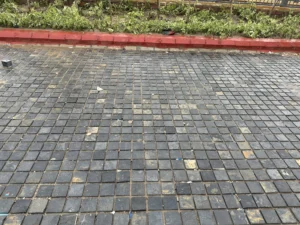Where Do Cobblestones Come From in the World?
Cobblestones are among the most enduring symbols of old-world charm, reminiscent of European streets and quaint little towns. Their rounded and uneven shapes have been trodden upon for centuries, bearing witness to countless footsteps of history. But where do these iconic stones come from? Let’s journey through the origins and history of the cobblestone.
Formation and Extraction
The origin story of cobblestones begins millions of years ago. They are typically small, naturally rounded stones, smoothed over time by the continuous movement of water in rivers, streams, and oceans. These stones are usually made up of harder rock types, such as granite, basalt, or other volcanic rock, that can resist the wear and tear of water currents.
Cobblestones were extracted from riverbeds or areas where glaciers had receded. As glaciers moved and melted, they would grind large rocks down into the smaller, rounded shapes we recognize today. When human civilizations began building roads, these stones were collected and set into the earth to create durable pathways.
Historical Use
The use of cobblestones for paving dates back thousands of years. Ancient Rome was among the first civilizations to recognize the durability of cobblestone roads, which were well suited for the rapid movement of legions and heavy carts. The old-world charm we associate with European towns and streets owes much to the Medieval and Renaissance periods when cobblestones were commonly used for urban infrastructure.
Geographical Distribution
While Europe is often the first region that comes to mind when thinking of cobblestones, they can be found all over the world.
Europe: From the streets of Prague to Edinburgh, cobblestones are an integral part of Europe’s architectural heritage.
Asia: Ancient cities in China and India have roads and pathways paved with cobblestones, indicating their widespread use in ancient trade routes.
Americas: In the New World, cobblestones were widely used in colonial towns. Cities like Philadelphia, Boston, and parts of New Orleans have historic districts with cobblestone streets.
Africa: Certain regions in North Africa, with a blend of Roman and indigenous architecture, can also boast cobblestone streets and pathways.
Modern-Day Relevance
Today, while modern roads have transitioned to asphalt and concrete for smoother rides and better vehicular control, cobblestones are still loved for their aesthetic appeal. They are frequently used in historic districts, pedestrian zones, and in landscaping, including patios and garden paths.
Moreover, cobblestones are also recognized for their environmental benefits. They are permeable, which means they allow rainwater to seep through the ground, reducing surface runoff and recharging groundwater.
Conclusion
The journey of the cobblestone, from riverbeds and glacial paths to the bustling streets of ancient and modern cities, is a testament to both nature’s power and human ingenuity. They stand as a bridge between the natural world and man-made infrastructure, and their enduring appeal is a reminder of the timeless nature of good design and utility. Whether you’re walking on a historic path or designing a garden walkway, the cobblestone remains an iconic choice that links us to the annals of history.


